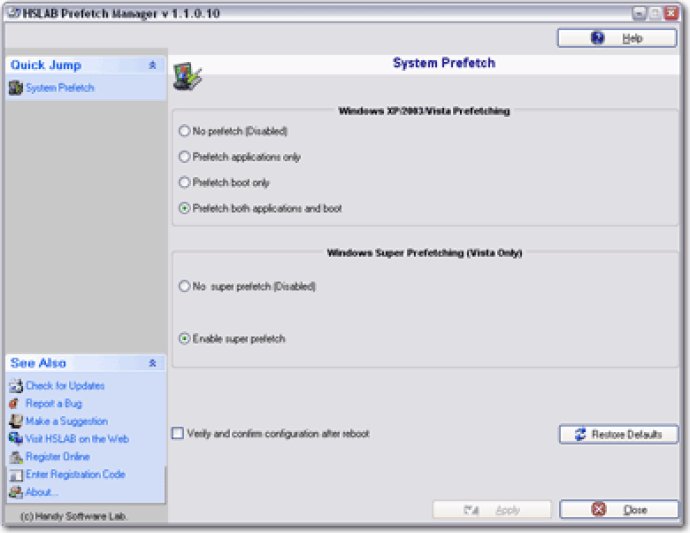Prefetch Manager accelerates the boot and launch time of XP, 2003, and Vista applications by utilizing the Prefetcher feature in Windows XP. This shortens the amount of time needed to start up Windows and programs.

What HSLAB Prefetch Manager does is give users the ability to disable the prefetcher with ease. This allows for more efficient troubleshooting in situations where the prefetcher is causing problems.
So, How does the Prefetcher work? During a Windows XP system boot, data is saved about all logical disk read operations. When the system boots up later, this information is used to prefetch the files in parallel with other boot operations. During this booting process and application launch, the system typically demands and pages a sizable amount of data in small chunks, such as 4 KB to 64 KB, while seeking between files, directories, and metadata.
The Logical Prefetcher, which is new for Windows XP, brings much of this data into the system cache with efficient asynchronous disk I / Os that minimize seeks. During boot, the Logical Prefetcher finishes most of the disk I/Os that need to be done for starting the system in parallel to device initialization delays, providing faster boot and logon performance.
Logical prefetching is accomplished by tracing frequently accessed pages in supported scenarios and efficiently bringing them into memory when the scenario is launched again. When a supported scenario is started, the transition page faults from mapped files are traced, recording which page of a file is accessed. Afterward, the trace is picked up by a user-mode maintenance service known as Task Scheduler. The information in the trace is used to update or create a prefetch-instructions file that specifies which pages from which files should be prefetched at the next launch.
Overall, HSLAB Prefetch Manager is a useful software tool for Windows XP users who want more control over the Prefetcher component. It can help improve overall system performance by fine-tuning the prefetching process and providing a better way of troubleshooting Windows and program start-up issues.
Version 1.4.3: N/A
Version 1.4.0: N/A